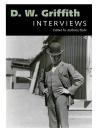Ingmar Bergman’s 1963 film The Silence was made at a point in his career when his stature as one of the great art-film directors allowed him to push beyond the boundaries of what was acceptable to censorship boards in Sweden and the United States. The film’s depiction of sexuality was, as Judith Crist wrote at the time in the New York Herald-Tribune, ‘not for the prudish.’ Yet Bergman’s notebooks and screenplays reveal his tendency for self-censorship, both to dampen the literary quality of his screenwriting and to alter portions of the script that Bergman ultimately deemed too provocative.
Maaret Koskinen, a professor of cinema studies and film critic for Sweden’s largest national daily newspaper, was the first scholar given access to Bergman’s private papers during the last years of his life. Bergman’s notebooks reveal the difficulties he experienced in writing for the medium of moving images and his meditations on the relationship (or its lack) between moving images and the spoken or written word. Koskinen’s attention to this intermedial framework is anchored in a close reading of the film, focusing on the many-faceted relationships between images and dialogue, music, sound, and silence.
The Silence offers filmgoers an entryway into the cinematic, cultural, and sociopolitical issues of its time, but remains a classic – rich enough for scrutiny from a variety of perspectives and methodologies. Koskinen draws a picture of Bergman that challenges the traditional view of him as an auteur, revealing his attempts to overcome his own image as a creator of serious art films by making his work relevant to a new generation of filmgoers. Her exploration of the film touches on issues of censorship and the cinema of small nations, while shedding new light on the shifting views of Bergman and auteurist film, high art, and popular culture.
Table des matières
PART ONE Backdrops and Contexts
1. National Cinema, Art Film, and the Auteur
The Auteur Contextualized
Antonioni: ‘That Perpetual Foil to Bergman’
Art Versus Business
The Auteur as Star
The Art of Reinventing Authorship
2. Censorship Issues: Sex, Women, and Hollywood
The Silence at Home: Debate and Controversy
The Silence Abroad: ‘The Bergman Ballyhoo Era’
Gender Issues: Now What About All These Women?
Director and Actress: Nudity and Power Relations
PART TWO Works in Progress: Intermedial Variations
3. In the Beginning Was (the Fear of) the Word: Notebooks
From Word to Sound . . . to Music and Painting
4. In Between Words and Images: Manuscripts and Screenplays
Edits: Too Many Words
Sex and the City: The Eroticism of Language
The Published Screenplay: Senses and Synesthetics
Excursion: Flash Forward to a Writer Let Loose
PART THREE The Finished Film
5. Framing the Senses
Sounds and Linguistic Voids
Beginnings: Windows and Sights
Paintings and Tableaux Vivants
The Phenomenology of Vision: Hotel Excursions
The Eroticism of Vision: Mirrors and Doorways
The Close-Up: The Bergman Icon
Conclusion
Production Notes
Filmography
Transcript of the U.S. Trailer for The Silence
Bibliography
A propos de l’auteur
Maaret Koskinen is professor of cinema studies at Stockholm University and the author of several books on Ingmar Bergman’s work.












